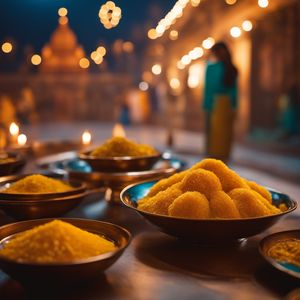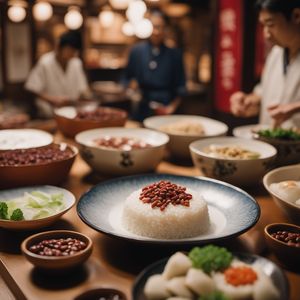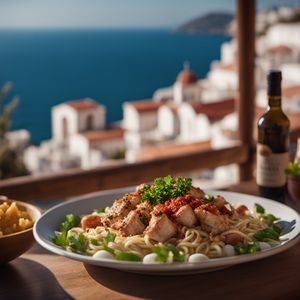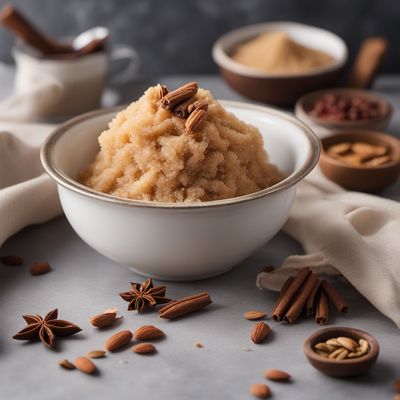
Dish
İrmik helvası
İrmik helvası is made by toasting semolina in butter until it turns golden brown, then adding sugar syrup. The mixture is then left to cool and served chilled. It can be garnished with chopped nuts or fresh fruit.
Origins and history
İrmik helvası has been a popular dessert in Turkey for centuries. It is often served at weddings and other celebrations. The dish has its roots in Ottoman cuisine and was traditionally made with honey instead of sugar syrup.
Dietary considerations
İrmik helvası is suitable for vegans and is gluten-free. It is high in sugar and should be consumed in moderation. It may contain nuts and dairy products, so it is important to check the recipe or ask the cook before consuming it.
Variations
İrmik helvası can be made with different types of nuts, such as almonds or pistachios. Some recipes also call for the addition of spices, such as cinnamon or cardamom. Some variations may use milk instead of water to make the syrup.
Presentation and garnishing
To prevent the semolina from clumping together while toasting, try stirring it constantly with a wooden spoon. İrmik helvası can be presented in a decorative bowl or on a plate. It can be garnished with chopped nuts, fresh fruit, or a sprinkle of cinnamon.
Tips & Tricks
If the semolina mixture becomes too dry, add a little more syrup or water to achieve the desired consistency. Be careful not to burn the semolina while toasting it, as this can give the dish a bitter taste.
Side-dishes
İrmik helvası is often served with a dollop of yogurt or whipped cream. It can also be served with fresh fruit or a scoop of ice cream.
Drink pairings
İrmik helvası is usually served with Turkish tea or coffee. It can also be paired with a glass of cold milk or a sweet dessert wine.
Delicious İrmik helvası recipes
More dishes from this category... Browse all »

Aamras
Indian cuisine

Aasmi
Indian cuisine

Agra petha
Indian cuisine

Aiyùbīng
Taiwanese cuisine

Ajdnek
Slovenian cuisine

Akafuku
Japanese cuisine

Akanés
Greek cuisine

Akumaki
Japanese cuisine
More cuisines from this region...

Assyrian cuisine
Savory, Tangy, Earthy, Herbaceous, Nutty

Caucasian cuisine
Spicy, Savory, Tangy, Herbaceous

Eastern Arabian cuisine
Spicy, Savory, Aromatic, Tangy, Sweet

Iranian cuisine
Savory, Spicy, Sweet, Tangy

Levantine cuisine
Fresh, Light, Healthy, Tangy, Savory

Pontic Greek cuisine
Bold, Hearty, Spicy, Tangy, Savory

